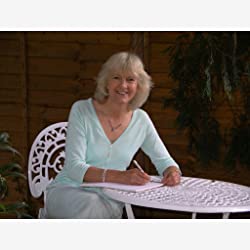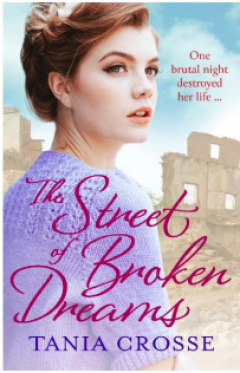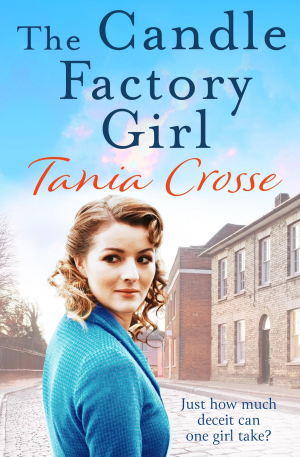Tania, welcome!
First of all, many congratulations on winning the RNA’s very first Romantic Saga of the Year Award. Before I ask about the book itself, The Street of Broken Dreams, I’d like to know how you and your saga-writing friends feel about the saga genre finally being recognised in this way.
Thank you, Susanna. I feel deeply privileged to have won this major award from the Romantic Novelists’ Association, and think of myself as an ambassador for this wonderful genre. It sometimes isn’t appreciated that it covers such a huge range of topics, eras and styles of writing that there is something to suit every taste, from the more traditional, cosy sagas to authors who, like myself, write gritty, hard-hitting stories. So it really is gratifying that the genre should have been recognised by such a prestigious organisation as the RNA.
The appetite for family sagas seems bigger than ever. What is the appeal of the saga to the reader.
Family sagas do indeed seem to be more popular than ever, particularly those set in the Twentieth Century. For some, it’s a case of nostalgia, but I believe the advent of the e-book has drawn those of a younger generation to the genre, too. The world has changed so much that they are curious about how their parents and grandparents lived. I also think that Twentieth Century sagas feel more accessible to younger people than, say, Victorian – even though that has always been my own favourite era and is still extremely popular. Combine all that with gripping story lines, engaging characters and, very importantly, a well-written narrative, and the reader is hooked.
‘Gripping, gutsy, unputdownable.’ ‘The historical detail is superb and this story is full of heart.’ The Street of Broken Dreams has received some wonderful reviews. Could you tell us something about the inspiration behind the book?
I myself lived in Banbury Street, Battersea, the street of the title, as a small child, and I always like to write about places I know. Ballet has been a life-long passion, and I’d wanted to write a story with a dancer as the heroine for a long time. Like Cissie, I once danced solo on the stage of Wimbledon Theatre, although only in an amateur way. So it was wonderful to give Cissie all the talent I never had. What happens to her in the 1944 prologue, however – and I must warn you, it’s pretty shocking – was inspired by a frightening encounter my mother experienced during the blackout. Thank goodness she was unharmed, but she never forgot what happened.
I studied dance under Miss Doris Knight for over a decade, and remained good friends with her throughout her life. She was a huge fan of my books, and told me all about her life as a dancer in repertory during the war. That became the Romaine Theatre Company in the story. Sadly she didn’t live to see the novel that she partly inspired.
In the book, Cissie’s friend, Mildred, has her own story. That was partly inspired by the fact that my father served in submarines in the Far East. My mother was one of those who was unable to celebrate VE Day while the war still raged against Japan, not knowing if Dad would return.
Many of your reviews comment on your attention to historical detail. Do you enjoy the research? How do you go about it?
I absolutely love doing the research! It’s fantastic when you discover a detail you’ve been searching for, or a surprise one that can set off a new scene or even thread to a story. In fact, for me, the history comes first, and the characters and plot grow out of it. I do my research in all sorts of ways, from original documents, books written by experts, or articles on the internet, but always cross-referencing. First hand accounts are a wonderful source. Sometimes I’ve been lucky enough to interview people who have lived through the era, although that is obviously more difficult as time passes and sadly, I’ve recently lost someone who had become a good friend I’d originally made in this way some years ago. But the BBC’s WW2 – The People’s War project remains accessible online. And now that I’m writing about an era only just before my own time – and things didn’t change for many years after the war – I’m drawing on my own memories as well.
So, in this case, there was no problem at all. My two previous stories, though, Nobody’s Girl and A Place to Call Home, were more clearly prequel and sequel. The first book is an entire story in itself with its own happy ending, but I do hint at the approach of war. The second book does indeed take the same characters through WW2, with the addition of the evacuees who come to stay. The main thing is to make sure that anyone who hasn’t read the first book has enough information about what happened previously to understand the situation, but without boring someone who has read it. The situation with my previous Devonshire series was slightly different. Each book was based on a different aspect of local history, moving forward in time, and had its own happy ending. I created links so that I could bring back characters from earlier novels in a minor way, but without revealing their own story.
Have you ever written about a character who was meant to have a small part in the story, but who unexpectedly blossomed and wanted a larger part in the plot?
Very much so. All my characters talk to me, and sometimes they take over. Eva is a prime example. When we lived in Banbury Street, we shared a house with a lovely elderly lady, and Eva was inspired by her and a mix of her visitors and a good dose of my own imagination. Eva has lived in the street all her life. In The Candle Factory Girl, she is best friend and confidante to a neighbour – whose daughter is the heroine. Eva was meant to be a minor character, but I found that she had kept her friend’s devastating secret for eighteen years, only revealing it at her friend’s dying request. Eva keeps a chaotic house and is arguably the worst cook in the world, but it is to her that everyone turns in a crisis. She grew as the book progressed, and I loved her so much that I wanted to explore her further. She is one of the main reasons I set another story on the street, with Eva very much as a major character.
If The Street of Broken Dreams was chosen by a book group, what do you think would make a good discussion question?
I think the obvious one would be who would you consider the main character, Cissie, Mildred or Eva? But you could also ask if anyone has spotted the link between this book and one of my 1950s Dartmoor sagas, Lily’s Journey.
What’s next for you? More Banbury Street?
For various reasons, I’ve taken a break from writing anything new, but I have been doing some research for a possible new WW2 novel. However, Eva has two younger children. Perhaps they have a story to tell, too, so it might be back to Banbury Street at some time in the future. It would, after all, be lovely to pop in to see Eva again, and see how she is faring!
Many thanks for joining me here today, Tania. Thank you for inviting me onto your blog, Susanna. I’ve thoroughly enjoyed answering your questions!
* * * *
Tania's links:
Her author page on Amazon
Her Facebook page
Tania's Twitter page
|





Make A Comment
Comments (1)